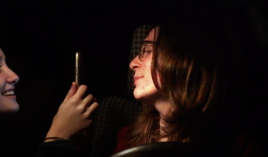
Rio Bravo, a 2023 Warner Bros restoration partnered by TCM
With very intense developments on the business side of the media production world through the strikes by, first, the Writers’ Guild, and then the Screen Actors Guild, here is another story that has garnered attention to those interested in the legacy, history, and cultural value of motion pictures: the precarious situation of Turner Classic Movies. In recent months, there have been significant layoffs at TCM and signs that the channel may be in jeopardy. This editorial from Maureen Dowd in June highlights the importance and mission of TCM, while this recent update from Entertainment Weekly addresses the question: What’s going on at TCM?
In the article, they describe how some are fighting to protect the network, and it features a quote that ties in closely with a great deal of work in the field of media literacy: “TCM has taken an approach to classic movies in a way that we try to make them relevant to a new audience. We’re trying to present the films in a way that treats the audience as smart and intelligent. We take very sober and reverential responsibility for these films, no matter what they are. We know that by showing these films, somewhere on a television set, somebody is watching them. That’s what TCM is doing in the long run — we are helping to maintain the cultural memory of the greatest art form of the 20th century.”
Stay tuned, and in the meantime, keep teaching and learning, be informed, and continue making new discoveries across the world of moving images.
 In the earlier post
In the earlier post  Several years ago, the Journal of Media Literacy Education published my article
Several years ago, the Journal of Media Literacy Education published my article  For this particular initiative, a strong range of messages were created. One project was created by a two-person team; theirs, titled
For this particular initiative, a strong range of messages were created. One project was created by a two-person team; theirs, titled  In an
In an  Postscript: In early 2022, as schools began to shift to ceasing mask restrictions and shifting to fully in-person classroom instruction, the advanced video production class I teach quickly created (two-day turnaround time, in response to a central administration request) a PSA that could be used in all schools.
Postscript: In early 2022, as schools began to shift to ceasing mask restrictions and shifting to fully in-person classroom instruction, the advanced video production class I teach quickly created (two-day turnaround time, in response to a central administration request) a PSA that could be used in all schools. 
 Non-fiction projects are core elements to the work in
Non-fiction projects are core elements to the work in